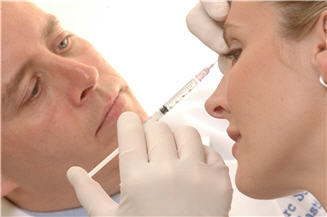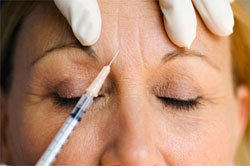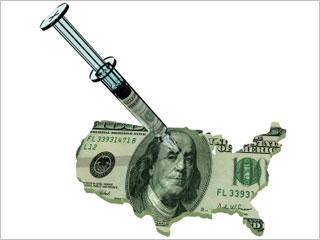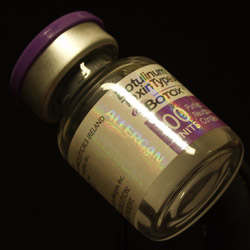A jury Tuesday awarded $15 million to an Oklahoma City doctor who said she suffered botulism poisoning after using the popular anti-wrinkle drug Botox.
The Oklahoma County jury found 9-3 that Allergan Inc., the maker of Botox Cosmetic, was negligent. In civil cases, at least nine jurors must agree.
Jurors voted 10-2 to give Dr. Sharla Helton $15 million in actual damages. They did not award punitive damages.
"Hopefully, now people will wake up to the real dangers,” Helton, 48, said of the negligence verdict. "It’s a stepping stone for now for public awareness.”
Her attorney, Ray Chester, of Austin, Texas, said, "I think there’s a lot of people out there that have been hurt by the product and maybe now they’ll have the courage to come forward.”
Allergan that produces Botox plans to appeal.
"The negligence verdict … is inconsistent with all credible scientific and medical evidence,” said a company spokeswoman, Caroline Van Hove. "Botox does not cause botulism.”
Helton complained of severe side effects after getting injections of 50 units of Botox Cosmetic on July 14, 2006. It was her fifth treatment for wrinkles. She eventually sold her medical practice and stepped down as medical director of Lakeside Women’s Hospital in Oklahoma City because of pain and weakness.
Attorneys for Botox told jurors the drug does not cause botulism. They also told jurors the doctor never had botulism. They said the diagnosis of botulism came from her friends, who are not experts.
The trial took three weeks. Jurors were deadlocked 8-4 at one point Monday night after hours of deliberations. They deliberated about three hours more Tuesday.
The jury found Tuesday in Allergan’s favor on a second claim against it – that its product was somehow defective.
A key issue in the trial was whether Allergan gave sufficient warning in product labeling about possible problems from Botox Cosmetic use. The labeling in 2006 did not include botulism.
"All they care about is sales,” Chester told jurors in closing arguments Monday. "They were intentionally concealing this evidence.”
Allergan’s attorney, Vaughn Crawford of Arizona, argued that "every known and even remotely possible side effect was in the labeling.” He said the warning in 2006 even included the possibility of death. He said Helton still was willing to use it.
Jurors were instructed they could find negligence if they decided Allergan failed to act like "a reasonably careful pharmaceutical company would” under similar circumstances. One juror told The Oklahoman that the jury found negligence because Allergan’s 2006 product labeling did not have adequate information about side effects. The juror said the jury came to that conclusion after comparing a 2006 label with the 2009 label.
Millions have used Botox since the Food and Drug Administration first approved it in 1989. Helton said Tuesday she is still debilitated by weakness but hopes to get back to practicing medicine again in some way. story
I guess even physicians want to chase an ambulance when possible... Anyone have some thoughts?
 Part 3: Complications with Botox & Filler Injections
Part 3: Complications with Botox & Filler Injections









